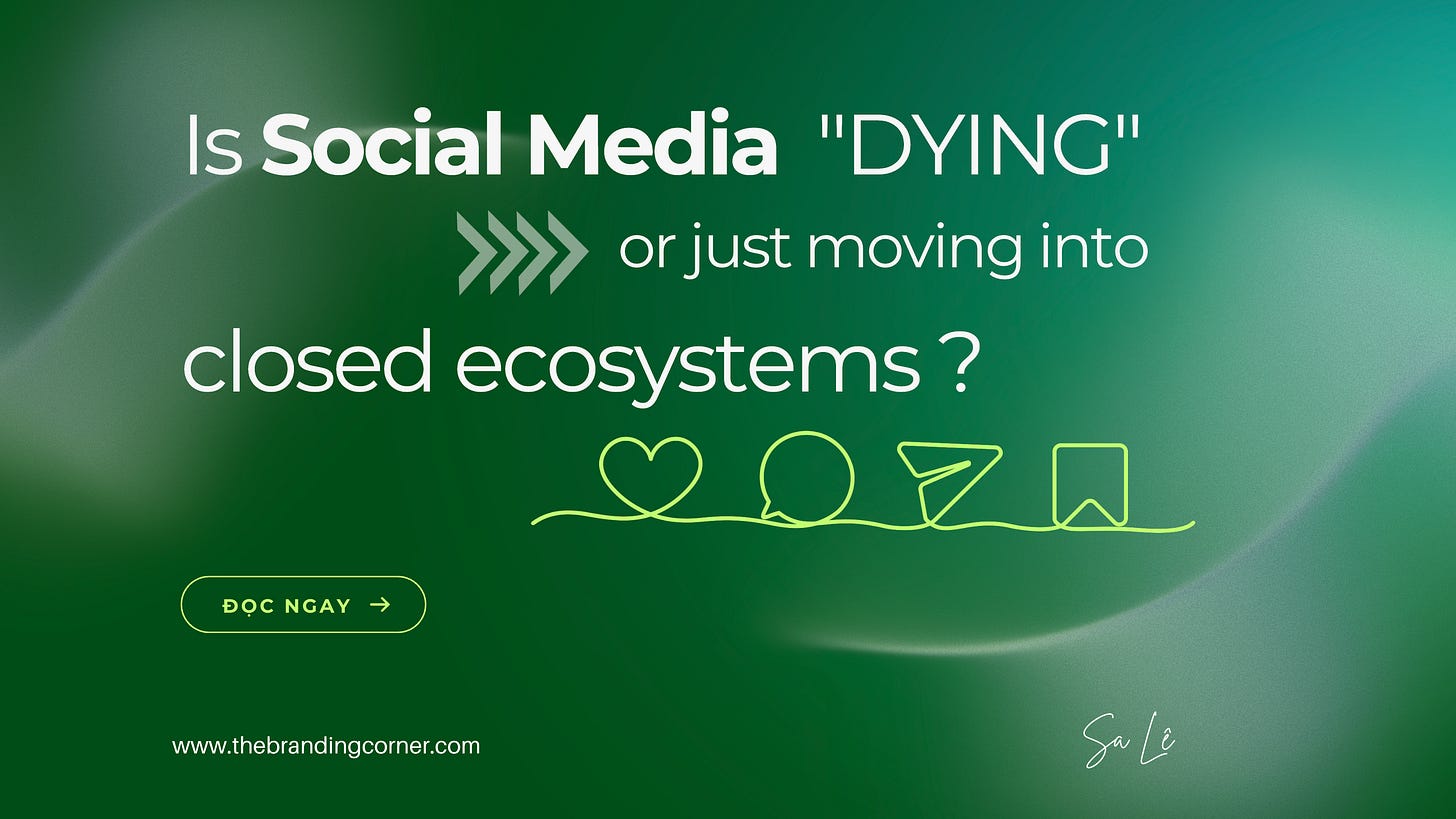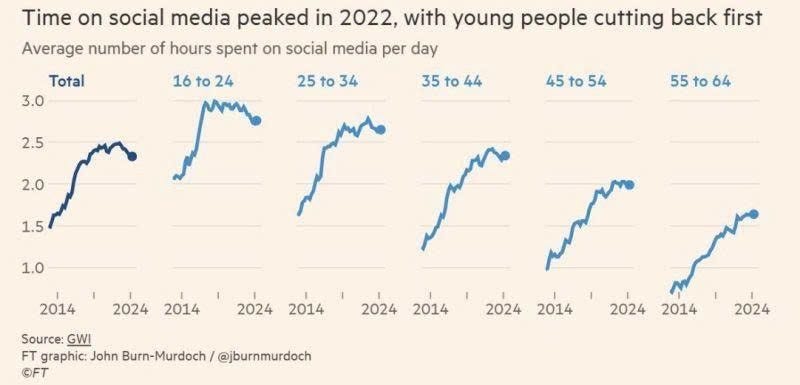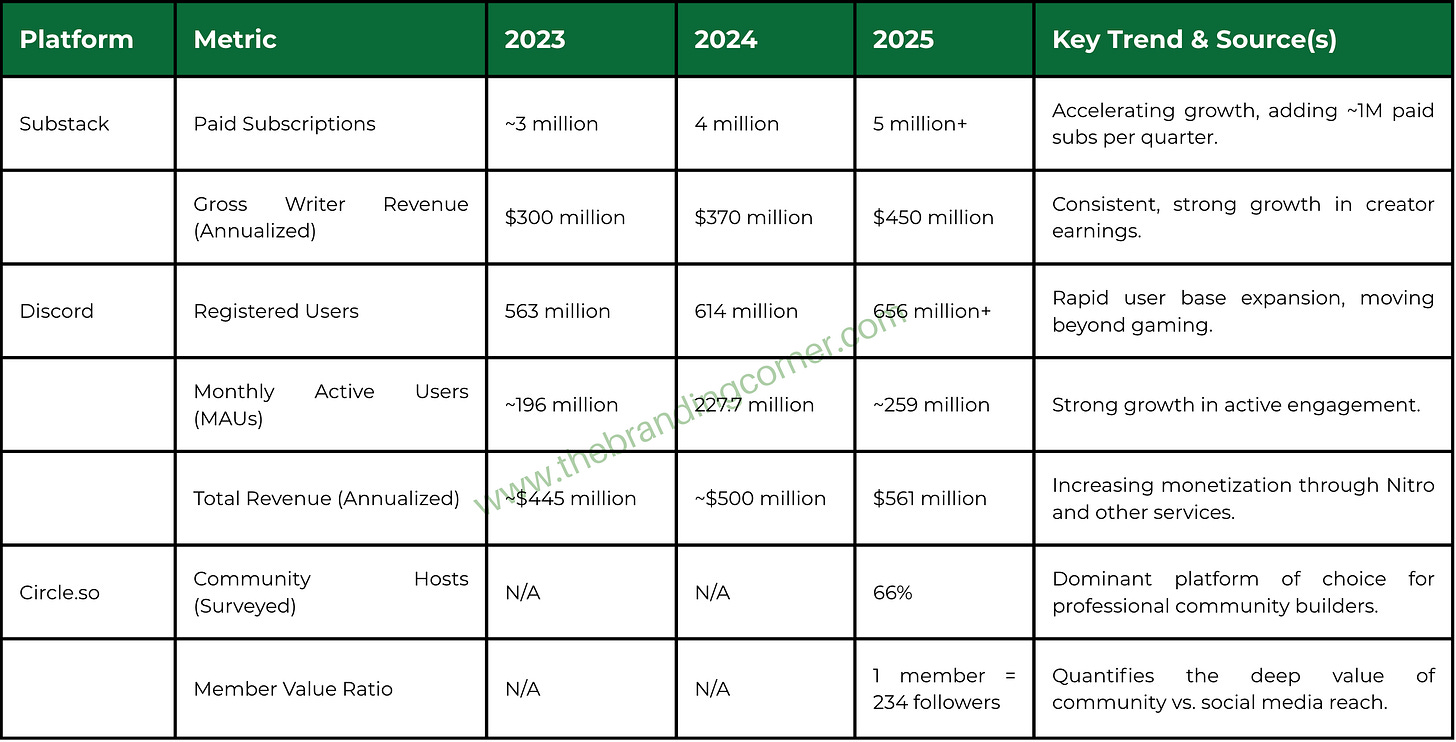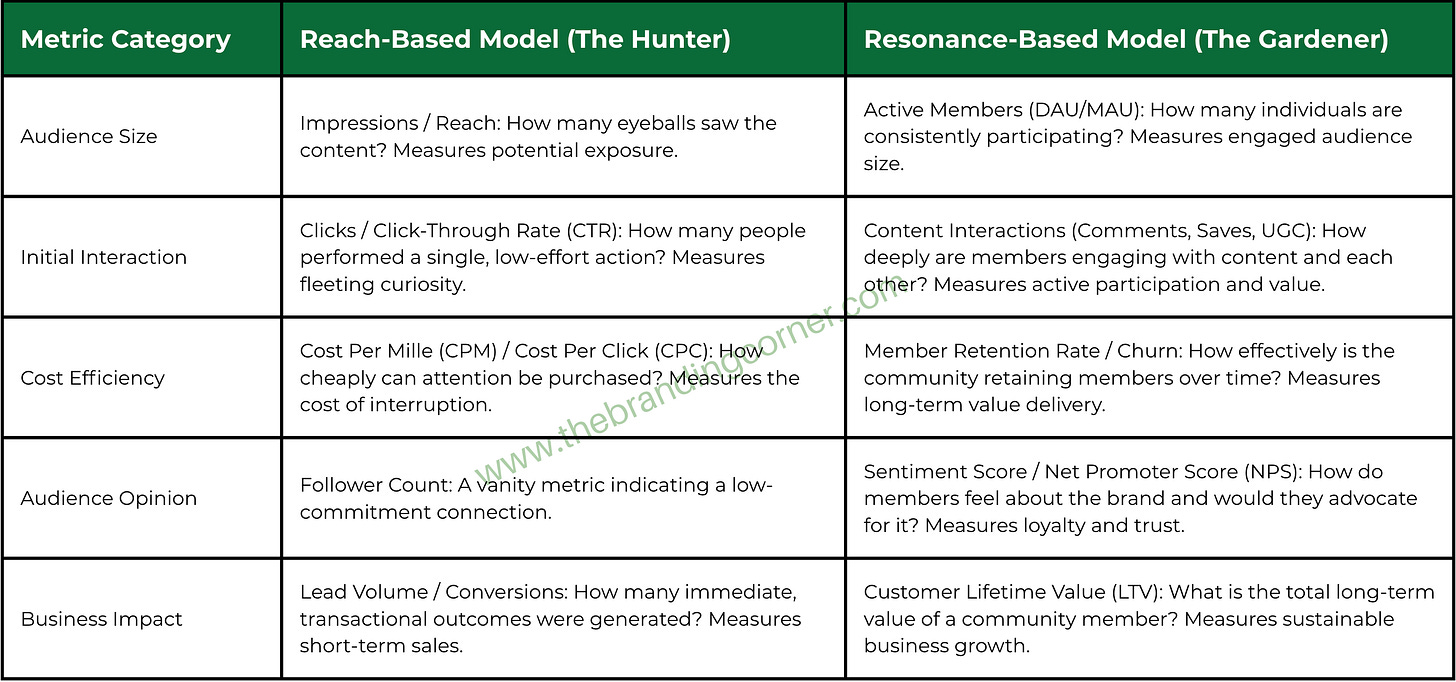Is social media dying or just moving into closed ecosystems?
Social media usage is declining for the first time. This post explains the strategic shift from open feeds to “closed ecosystems” and how your brand can thrive in this new era.
The great decoupling and why the mass-audience model is broken
The foundational model of digital marketing for the past decade has been predicated on a simple, alluring premise: scale equals success. The primary objective was to maximize reach, chasing ever-larger audiences across sprawling, open social media platforms. This paradigm, however, is now facing a systemic crisis. The era of the public digital square is not ending, but its role as the central hub of meaningful connection and effective marketing is fundamentally broken.
The most telling indicator of this shift is the stagnation of user attention. The global average for daily time spent on social media, after peaking, has now begun a slight but significant decline.
This data does not suggest an exodus from digital life but rather the maturation of the attention economy. The low-hanging fruit has been harvested. Beneath the surface of these metrics lies a profound behavioral shift. Users are increasingly experiencing “platform fatigue,” leading to a move from active creation to passive consumption. A significant portion of users now open social media apps reflexively to “fill spare time” rather than to connect, and data shows a marked decline in active public posting.
The relentless pursuit of scale has also come at a steep cost: trust. The business model of open platforms has saturated user feeds with sponsored content and misaligned promotions, fostering deep-seated skepticism. This erosion of trust exposes a fundamental flaw in the old marketing paradigm: scale doesn’t equal trust. The ability to push a message to millions of disengaged users is a hollow victory.
For years, this broken model has been propped up by a flawed measurement system fixated on “vanity metrics” like clicks, impressions, and views. These metrics quantify momentary interactions, not enduring relationships, leading to the second core fallacy: attention without retention is noise. This crisis in the mass-audience model is not a temporary downturn but a structural break, acting as the catalyst for a great migration.
The attention migration and where users are really going
The breakdown of the mass-audience model has triggered a significant relocation of attention. Users, tired of public performance, are seeking more private and meaningful connections. Simultaneously, creators, recognizing the instability of building on “rented land,” are leading an exodus toward digital properties they can own and control.
Users are retreating from the performative environment of the public feed and moving their most valuable interactions into more intimate spaces like DMs and group chats. This user-led flight to privacy is a powerful, organic demand for the very characteristics that define closed ecosystems: safety, intimacy, and control.
While users are pulled toward privacy, creators are being pushed by instability. They are subject to “platform risk,” the constant threat that an opaque algorithmic change could decimate their reach overnight. This inherent instability has created an urgent strategic imperative for creators to move their core audience from “rented land” (social media platforms) to “owned land,” digital properties where they set the rules, control the data, and own the relationship. This strategic “flight to quality” represents the maturation of creators from influencers into true entrepreneurs.
The rise of creator-architects and the ownership economy
As this migration occurs, a new class of leader has emerged: the creator-architects. They are not just participating in culture. They are designing the very structures where culture is born and nurtured.
The scale of this movement is staggering. The creator economy, valued at $250 billion in 2024, is projected to nearly double to almost $500 billion by 2027. This ecosystem is powered by a global workforce of over 207 million creators. The most sophisticated of these have moved far beyond sponsored posts; they are leveraging their deep audience connection to become founders, launching their own product lines and media platforms. They are not just decorating a room in Meta’s or Google’s house; they are building their own and inviting their community to live in it.
This architectural control gives rise to the “ownership economy,” a model built on direct-to-fan monetization. Subscription-based models have proven to be the most lucrative, as evidenced by the explosive growth of platforms that facilitate them.
The data above proves a widespread willingness among consumers to pay directly for high-quality, niche content. This economic model transforms fandom from a one-to-many broadcast into a many-to-many collaboration, where fans become patrons, members, and active participants. This creates a powerful economic flywheel, where value is derived from deep loyalty and shared identity, not from the fleeting currency of algorithmic attention.
The new marketing playbook from reach to resonance
This structural shift from open feeds to closed ecosystems necessitates a complete overhaul of the marketing playbook. The new paradigm requires a fundamental re-imagining of the brand’s role, guided by new metaphors and measured by new metrics.
The metaphor shift from hunter to gardener: The dominant metaphor for traditional marketing has been the “Hunter.” The hunter’s objective is clear and transactional: identify a target, pursue it aggressively, and secure the sale. This is a short-term, extractive approach. The new marketing paradigm demands the mindset of a “Gardener.” The gardener’s work is patient, nurturing, and focused on cultivation. They do not chase a single target; they cultivate an entire ecosystem. The harvest, sales, loyalty, and advocacy are the natural, sustainable outcomes of a healthy, thriving environment.
The metric shift from reach to resonance: This change in strategy requires a corresponding change in measurement. The old playbook’s obsession with reach (how many people see a message) is giving way to a new focus on resonance (how deeply that message connects). In a saturated, low-trust environment, reach is a vanity metric; resonance is what builds brand equity and drives business results. Emotionally connected customers have a 306% higher lifetime value and are 70% more likely to recommend a brand.
To operationalize this shift, marketers must adopt a new dashboard of Key Performance Indicators (KPIs).
These new metrics, including Active Members, Member Retention Rate, and Customer Lifetime Value (LTV), provide a holistic, in-depth view of a brand’s most valuable asset: the loyalty and trust of its community. They measure the true drivers of sustainable growth.
Navigating the future with strategy and tactics
The migration to closed ecosystems is a strategic landscape to be navigated. Thriving in this new world of “containers” requires a deliberate strategic choice and a new set of tactical skills.
The strategic crossroads: Build, Partner, or Hybrid? Brands face a choice with three primary pathways:
Build: Create a proprietary, brand-owned community from the ground up (e.g., on Circle. so or a dedicated app). This offers maximum control but requires a significant, long-term investment.
Partner: Authentically integrate with existing, creator-led communities. This offers immediate access to high-trust audiences but requires the brand to relinquish control and lead with value.
Hybrid: Combine elements of both, perhaps partnering with large creators for awareness while building a smaller, intimate community for super-users.
Tactics for thriving in closed ecosystems: Regardless of the strategy, success requires a new tactical approach:
Lead with value, not with a pitch: The cardinal rule is to contribute before you ask. Share expertise, answer questions, and facilitate discussions.
Embrace co-creation: Actively involve community members in the business itself, from soliciting feedback on new features to inviting them to help design marketing campaigns.
Empower community leaders: Identify emergent leaders within the community and empower them through formal moderator or ambassador programs. When members feel a sense of agency, the community becomes self-sustaining.
The strategic imperative to invest in closed ecosystems goes far beyond short-term marketing goals. In a competitive landscape where product features are easily copied and customer acquisition costs on open platforms continue to rise, a loyal and engaged community is the ultimate defensible competitive advantage.
Conclusion
The era of chasing mass attention on open social media feeds is ending. The future belongs to “closed ecosystems,” niche communities built around shared meaning, not algorithmic reach. This requires a fundamental shift in mindset and strategy for all brands and creators.
The strategies, mindsets, and metrics that defined success in the last decade are not just outdated; they are counterproductive in a world built on trust and deep connection. The new playbook requires brands to become gardeners, not hunters, and to measure success by the resonance of their message, not just its reach.
In the next decade, success won’t be measured by how many followers you have, but by how deep and valuable your community is. The question every marketer and creator must now ask is: Have you started building your container yet?






